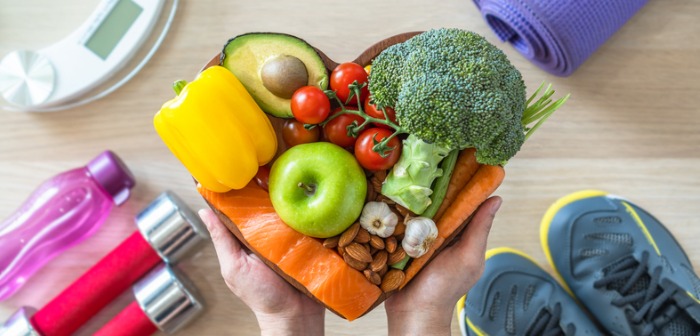For years, we were told that cholesterol is bad. It spurred a whole industry of low-cholesterol foods.
As it turns out, not all cholesterol is bad. Kevin Miller, MD, a Cardiologist at the Florence Wormald Heart and Vascular Institute at St. Elizabeth Healthcare, provides a deep dive into what you need to know about cholesterol.
What is Cholesterol?
Cholesterol is a waxy substance that’s found in all cells of the body. It helps build cells, among its many functions. It’s carried through the bloodstream by proteins called lipoproteins. This is where the division between “good cholesterol” and the bad starts to become clearer:
- Cholesterol carried by low-density lipoproteins (LDL) is delivered throughout the body, supplying organs and tissues with what they need. Unfortunately, if you already have enough cholesterol in those cells, LDL cholesterol continues to circulate through your bloodstream, entering the walls of blood vessels to form plaque. This can lead to heart disease, which is why LDL has been tagged with the “bad cholesterol” stigma.
- On the other hand, some cholesterol is attached to high-density lipoproteins (HDL). They’re the good guys. HDL cholesterol act as the scavenger of your bloodstream, snagging excess cholesterol from its travels and depositing it in the liver, where it can be broken down. The higher your HDL levels – “good cholesterol” – the lower your LDL levels will be. That means less chance of heart disease.
How Cholesterol Affects Your Heart Health
Excess amounts of LDL cholesterol can form plaque in the arteries, which can lead to atherosclerosis (thickening and hardening of the arteries). Over time, this can increase your risk for heart disease, heart attack and stroke. Keeping an eye on your LDL cholesterol level and working to keep it below the upper limit that’s right for you (based on your history and risk factors) can help protect your heart.
How to Manage LDL Cholesterol
Eating well – like following a Mediterranean diet – and getting the recommended amount of exercise may help reduce your LDL cholesterol. Or, you may be a person whose genetics predispose you to unhealthy cholesterol levels, even if you’re fit and active. In this case, starting a preventive cholesterol medication at a young age may be smart for you.
How to Increase HDL Cholesterol
Now that you know the difference between the good and the bad, here are the healthy tips to increase your HDL levels:
1. Lifestyle Changes
When you talk about lowering cholesterol, the first thing that might come to mind is diet. Dr. Miller recommends following the Mediterranean diet. There are also non-dietary changes that can have as much (if not greater) an effect on your cholesterol level:
- Don’t smoke. Quitting smoking can boost your HDL level by as much as 10% in a short period of time, according to the American Heart Association.
- Exercise regularly. If you exercise to lose weight, you can increase your HDL levels by as much as 5% in just a few months. Aim for 30 minutes of exercise five days a week.
- Lose weight. “Losing just 5 to 8 pounds can move the needle on your cholesterol significantly,” explains Dr. Miller. Studies have shown that for every six pounds you lose, your HDL level increases by a milligram.
- Reduce stress. Ongoing and uninterrupted stress increases your stress hormones which put added pressure on your heart and other organs.
- Limit alcohol. Moderation is key when it comes to alcohol. Limit your intake to positively impact your heart health, help your liver, maintain healthy blood pressure and keep your weight healthy.
2. Chose Healthier Fats
A healthy diet has to include some fat, but if you choose healthier fats and watch the intake of bad fats, you can boost your HDL significantly. Doctors advise avoiding saturated and trans fats, which have been shown to raise LDL levels. Instead, opt for monounsaturated and polyunsaturated fats typically found in nut oil and avocado and olive oils.
Nuts, fish and other foods containing omega-3 fatty acids are other good choices for improving your LDL cholesterol to HDL cholesterol ratio.
3. Cut “Empty Carbs”
Foods high in carbohydrates, without much other nutritional benefit, are HDL killers. According to the Journal of the American Medical Association, the more calories you get from these “empty carbs,” high-sugar foods (like soda) and processed foods, the lower your HDL levels will be.
Manage Your Cholesterol
If you aren’t already on a regular cholesterol screening schedule, talk with your St. Elizabeth primary care provider about your risk factors and the schedule that makes sense for you.

